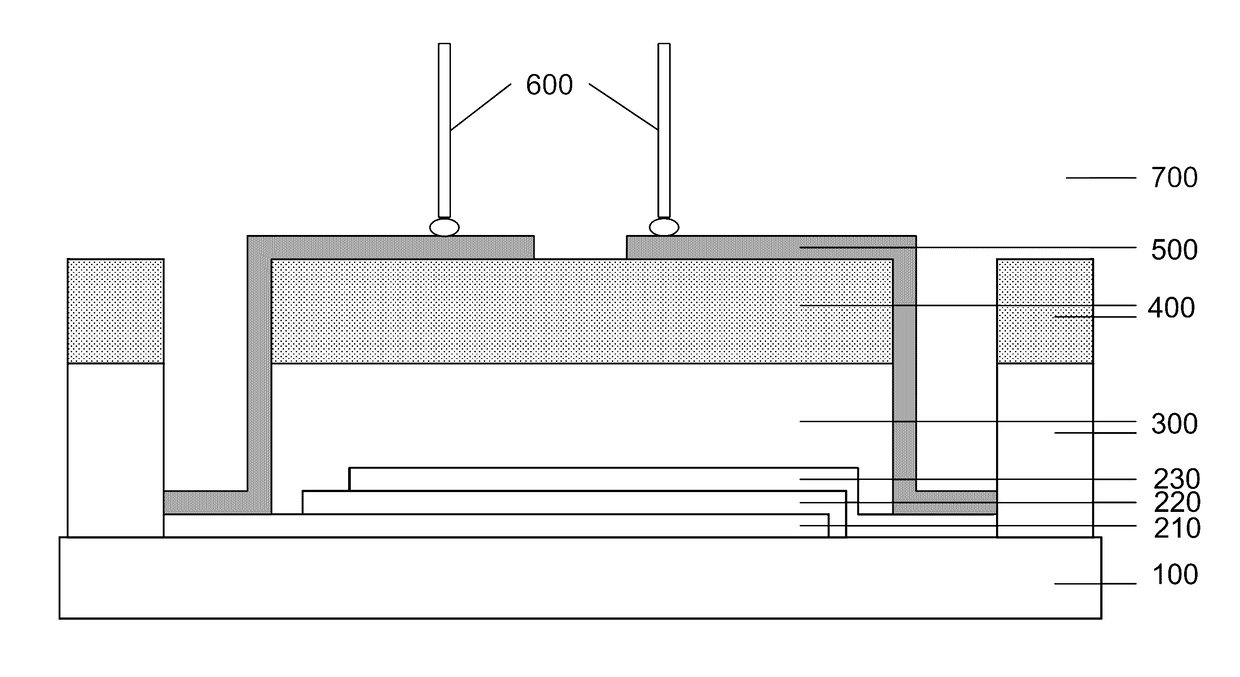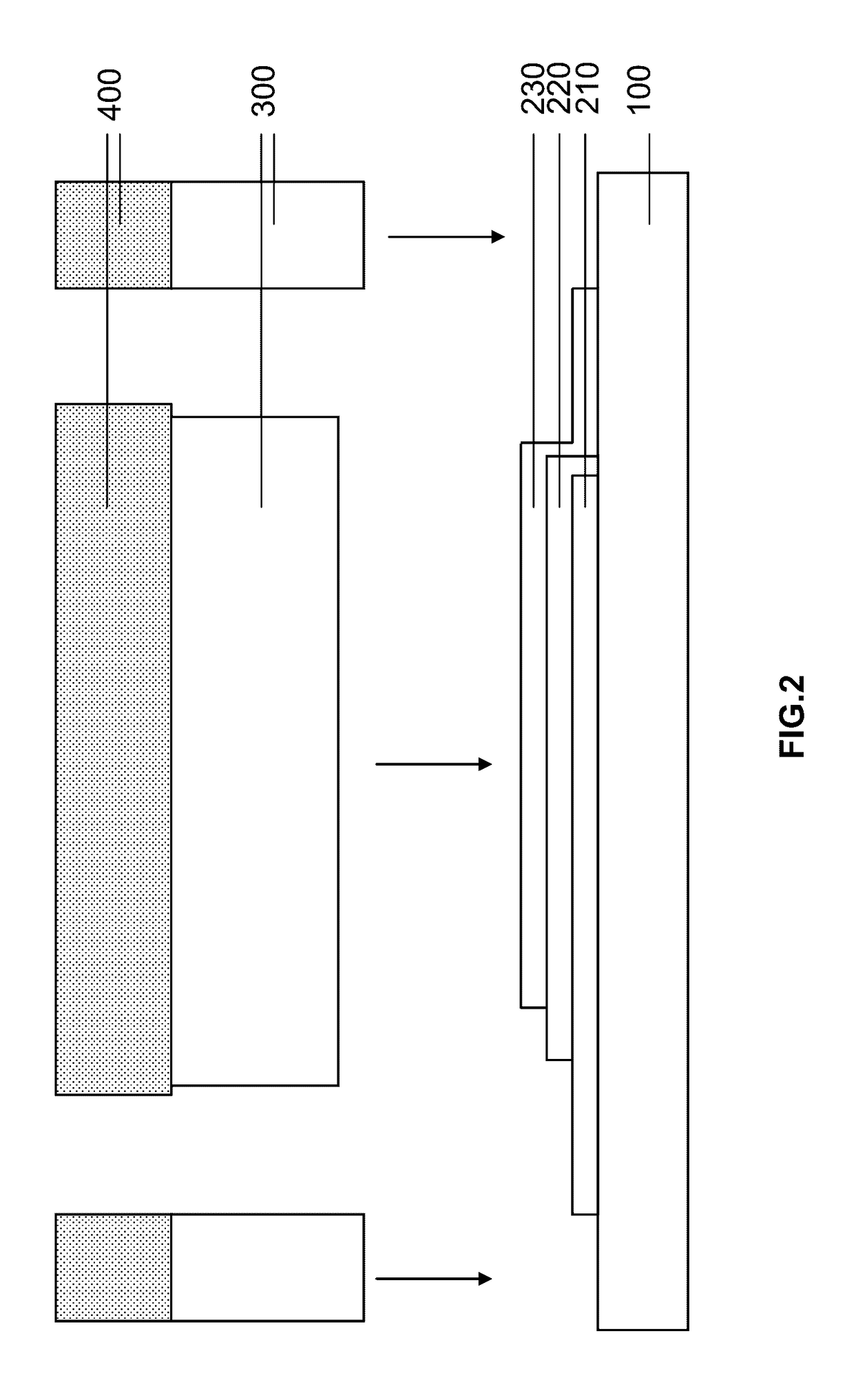Electrical connection of an OLED device
a technology of electric connection and oled device, which is applied in the direction of organic semiconductor devices, electrical devices, semiconductor devices, etc., can solve the problems of defective contact, critical issue in the degradation of organic devices, and high manufacturing cost, and achieve the effect of ensuring the perfect sealing of the manufacturing process
- Summary
- Abstract
- Description
- Claims
- Application Information
AI Technical Summary
Benefits of technology
Problems solved by technology
Method used
Image
Examples
Embodiment Construction
[0032]It should be noted that, within the scope of the present invention, the word “on” does not necessarily mean “in contact with”. Thus, for instance, depositing a first layer on another layer does not necessarily mean that the two layers are directly in contact with each other, but this means that one of the layers at least partially covers the other layer by being either directly in contact therewith or by being separated therefrom by another layer or another element.
[0033]Prior to going into details relating to the preferred embodiments of the invention while referring more particularly to the drawings, other optional characteristics of the invention which may be implemented in any combination or alternately, are mentioned hereafter:[0034]the method comprises a step of fixing a first end of at least one elongated electrical connection member 600 to an area of the connection pad 500 covering a portion of the second face of the cover 400,[0035]the method comprises a step of formi...
PUM
 Login to View More
Login to View More Abstract
Description
Claims
Application Information
 Login to View More
Login to View More - R&D
- Intellectual Property
- Life Sciences
- Materials
- Tech Scout
- Unparalleled Data Quality
- Higher Quality Content
- 60% Fewer Hallucinations
Browse by: Latest US Patents, China's latest patents, Technical Efficacy Thesaurus, Application Domain, Technology Topic, Popular Technical Reports.
© 2025 PatSnap. All rights reserved.Legal|Privacy policy|Modern Slavery Act Transparency Statement|Sitemap|About US| Contact US: help@patsnap.com



